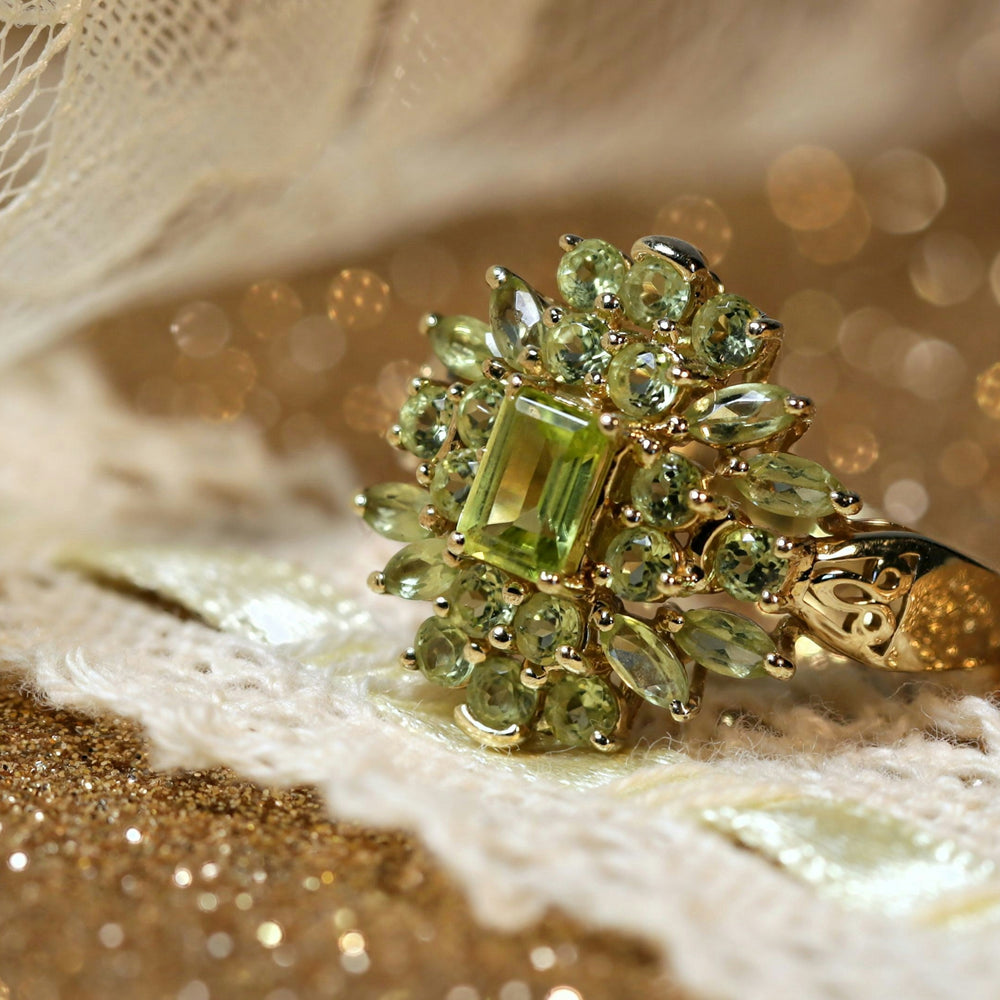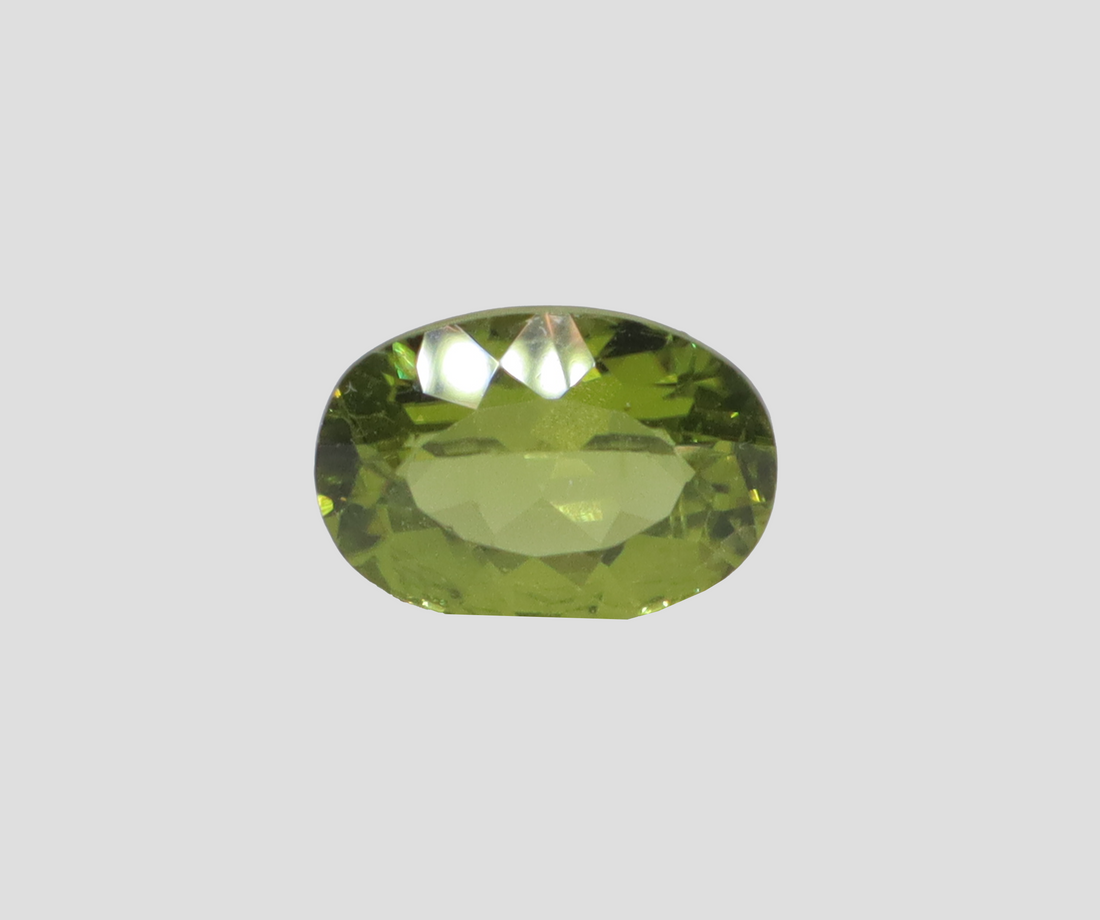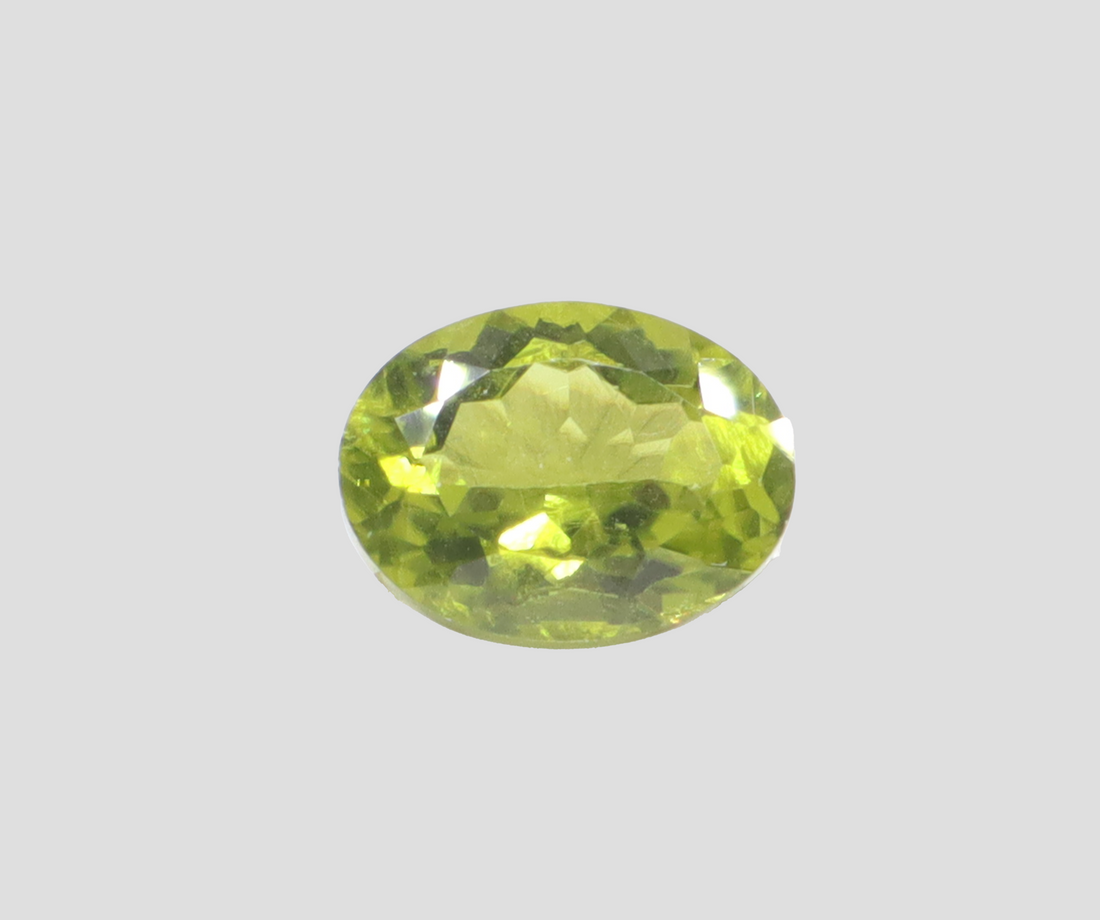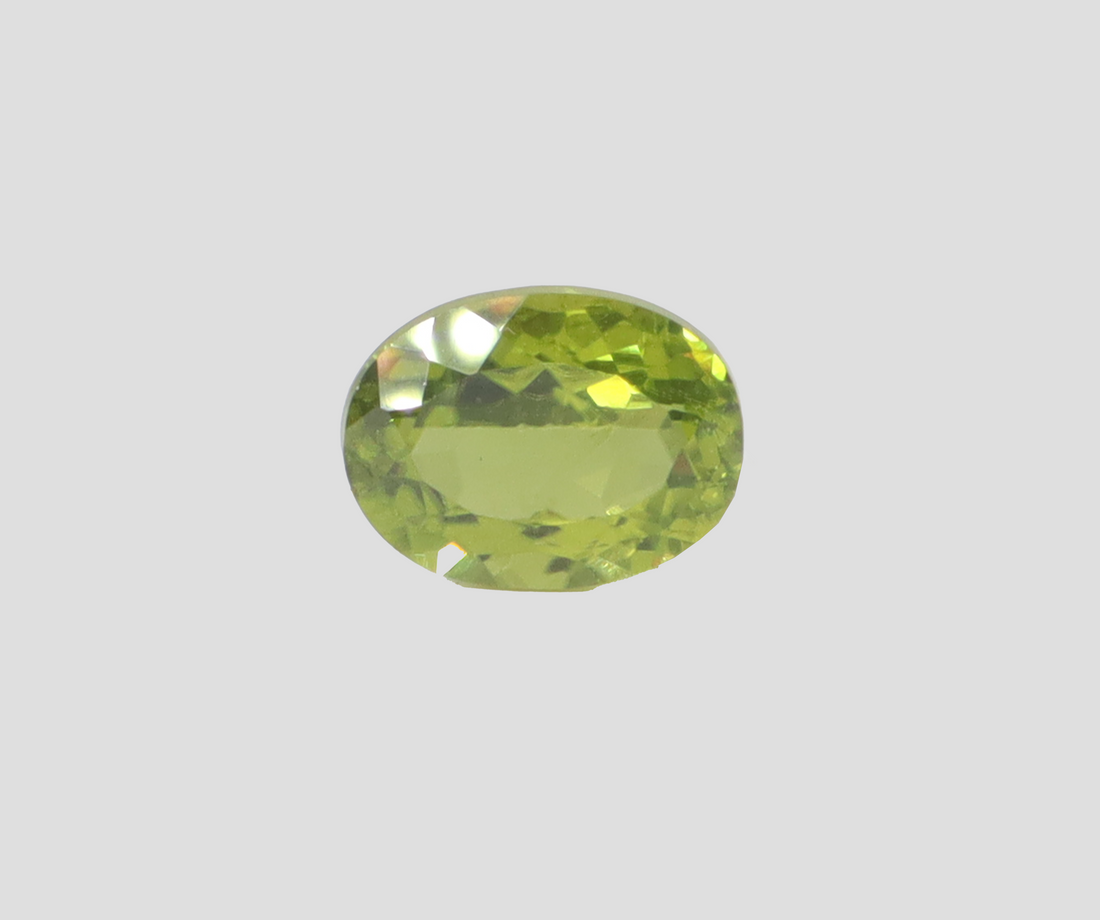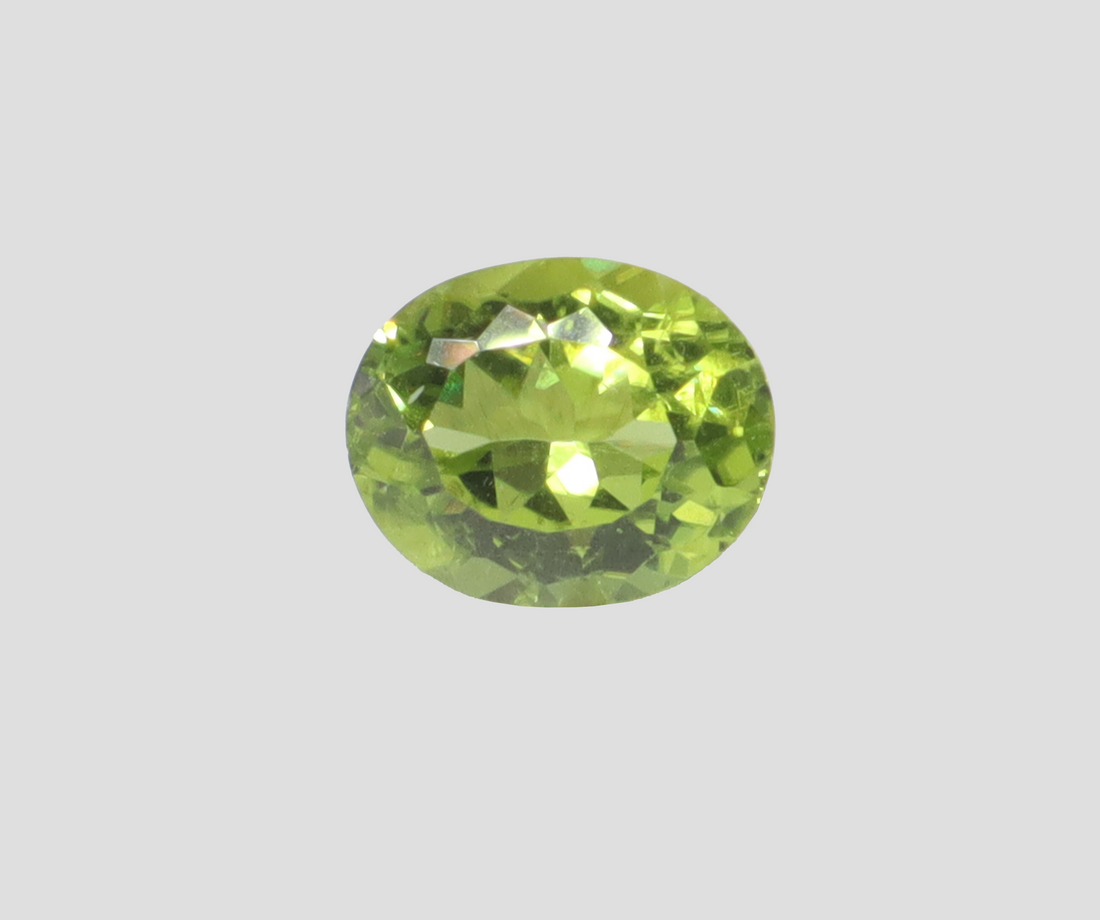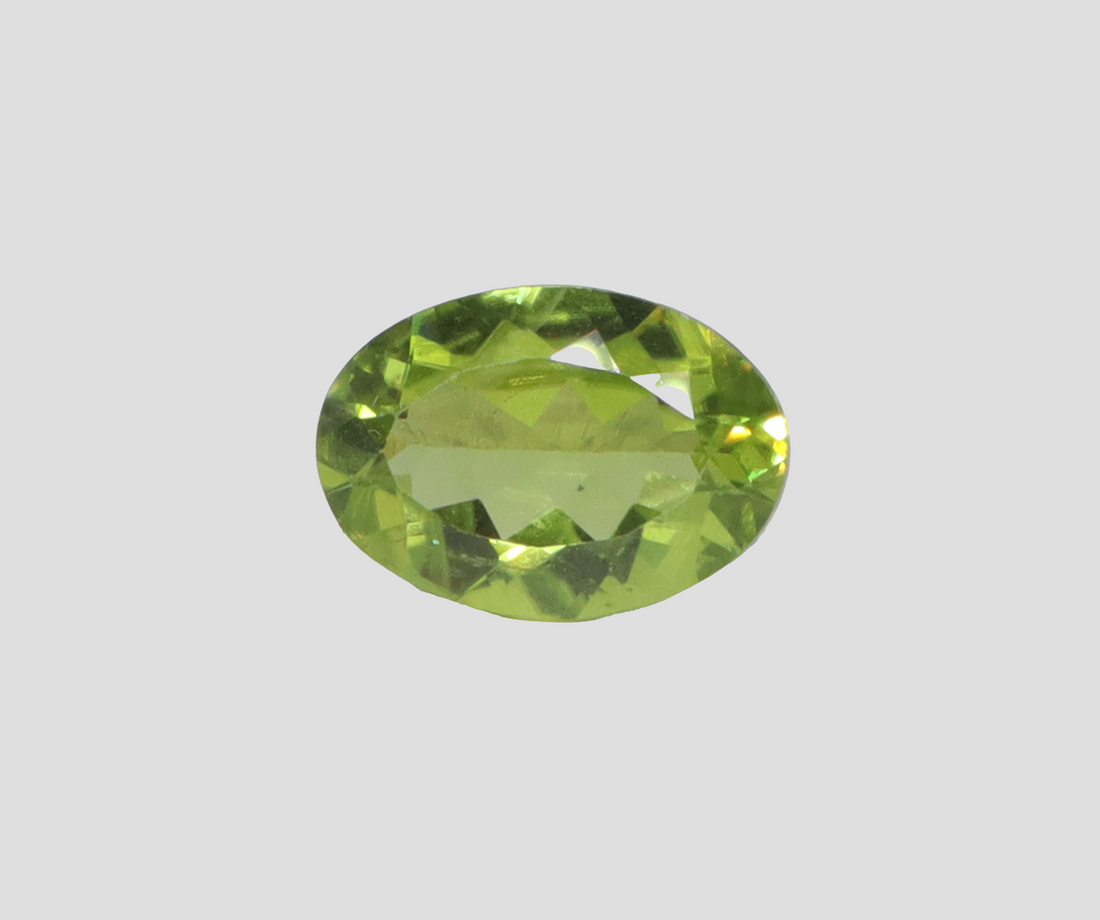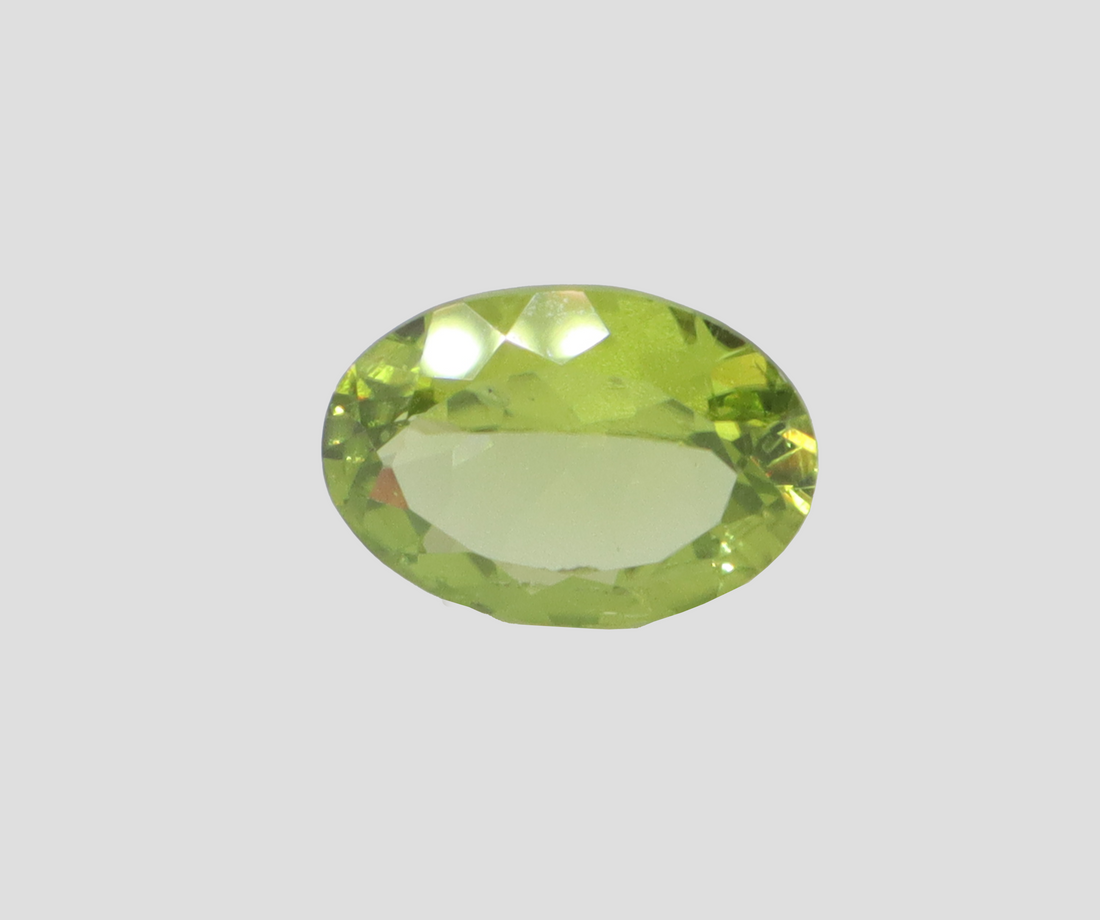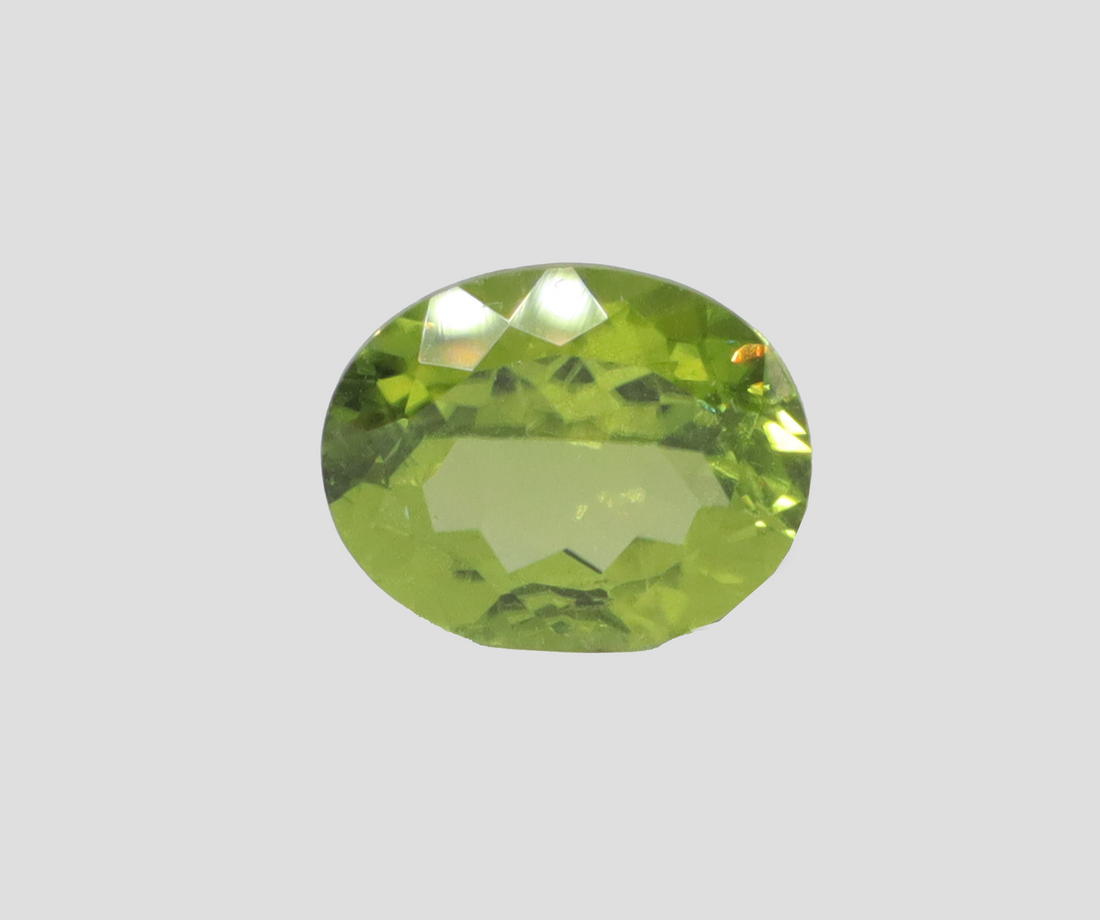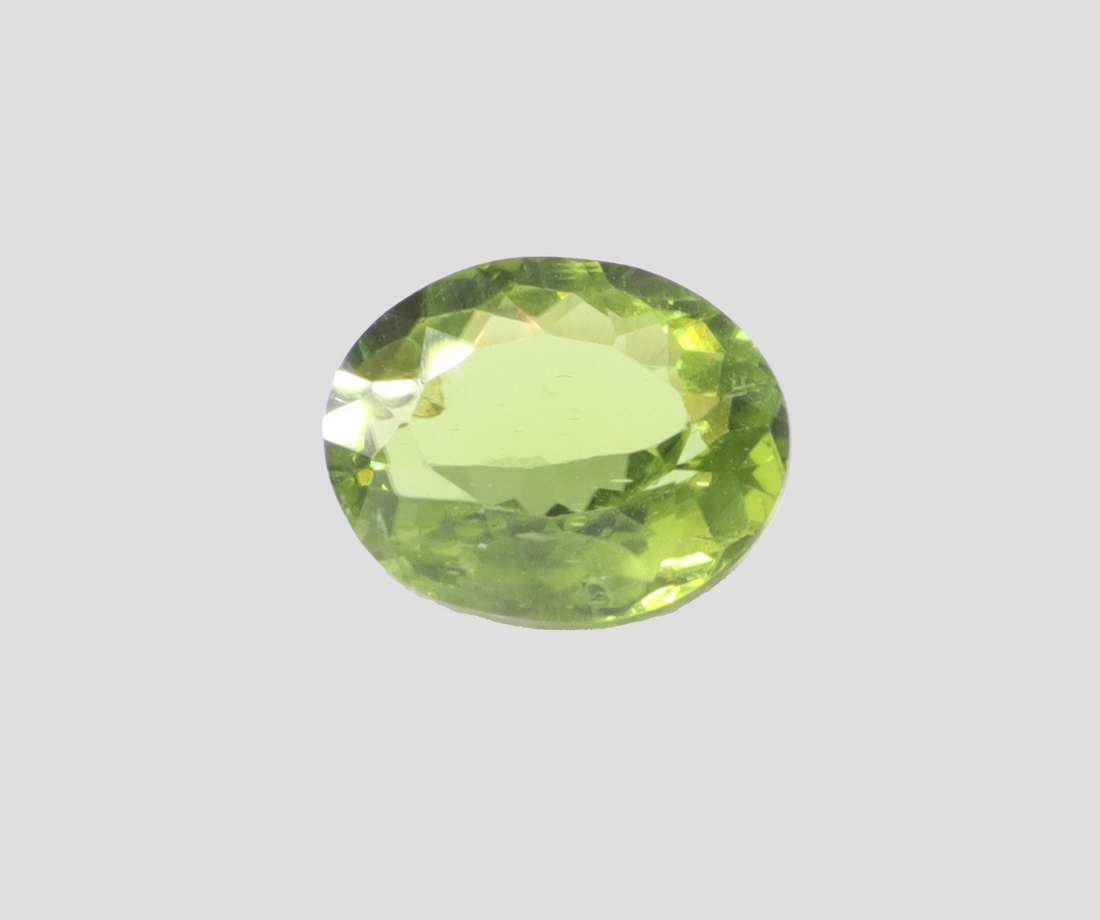This article serves as part of an ongoing series of profiles on the different varieties of precious & semi-precious gemstones. To view the entire list, click here.
Welcome to the beguiling world of peridots – captivating gemstones nestled within the olivine mineral family, renowned for their mesmerizing green allure. Originating from the Arabic term "faridat", which roughly translates to "gem", peridots boast a storied past steeped in cultural significance, spanning centuries of fascination and admiration. Born deep within the Earth's mantle and propelled to the surface by the forces of volcanic activity, these gems unveil a kaleidoscope of green hues, from delicate yellowish-green to profound olive shades. Symbolizing positive virtues, peridots are revered as harbingers of good fortune and prosperity, enchanting admirers with their intrinsic beauty and mystical charm.
Yet, what truly sets peridots apart is their remarkable presence not only across all 7 continents, including the icy expanse of Antarctica, but also on celestial bodies like Mars, the Moon, and even meteorites. Cherished by ancient civilizations for their enigmatic allure, peridots graced various forms of jewelry, from ornate rings to sacred adornments. As we embark on this journey through history and science, we uncover everything you need to know about peridots – including details about their formation, origins, colours, and astrological significance.
1. Peridots - Formation & Occurrence
Peridot, a distinctive transparent gemstone with a yellowish-green hue, falls under the category of Olivine or Chrysolite minerals, represented by the chemical formula (Mg, Fe)₂SiO₄ - underlining its composition of Magnesium and Iron Silicate. Unlike most gemstones that are formed in the Earth's crust, peridot sets itself apart by originating not in the crust but in the molten rock of the upper mantle. Remarkably, this gemstone has also been found in specific meteorites, formed through a cosmic process involving the cooling of molten rock—possibly remnants from ancient stars or celestial bodies.
Most traditional gemstones such as sapphires, emeralds, or rubies, are formed within the Earth's crust, extending approximately 20 miles deep. However, only 2 gems, Diamond and Peridot, emerge from the mantle beneath the crust. Peridot, uniquely, forms in the upper mantle, located between 20 to 55 miles beneath the surface, within magma.

Rough Peridot crystals
Gem-quality peridot stones have also been found in celestial bodies outside Earth, extending its origin beyond terrestrial boundaries. Crystals of this gemstone have been unearthed in pallasite meteorites colliding with Earth over the centuries. Speculations suggest these crystals originated from distant celestial bodies or were ejected during Earth's formation, eventually returning after billions of years. Peridots have also been found on the Moon, and on Mars.
2. Where Are Peridots Found?
Peridot is a vibrant green gemstone found globally, with some of the most significant sources being Zabargad Island in the Red Sea near Egypt, Mogok in Myanmar, and various locations in the United States. Zabargad produces crystals within nickel-bearing rock on the ancient Egyptian island, noted for its rich medium green color. Myanmar is a top supplier of large, transparent peridots, sometimes reaching several hundred carats.
In the U.S., Arizona and New Mexico yield peridots eroded from parent rocks or ant hills, occasionally with larger gems. Although larger cuttable pieces are rare, Norway's Ameklovdalen provides pale lime green peridots. Additional mining locations span multiple continents, such as Riverside, California, and Chihuahua. The Canary Islands occasionally produce matrix cabochon peridots over 80 carats. Peridots also originate in space - in pallasite meteorites. Other sources of peridots include Pakistan, China, Brazil, Hawaii, Australia and South Africa.
 Peridot crystals trapped within a pallasite meteorite
Peridot crystals trapped within a pallasite meteorite
3. The Colour Span of Peridots
Peridots are a unique class of gemstones because they are among a handful of gemstones that occur in a single colour – green. This intensity and purity of the green shade, however, varies depending on the amount and type of iron present within the gem’s crystal structure. Ferrous iron (Fe2+), for example, contributes to the green hue in Peridot, while ferric iron (Fe3+) imparts a yellow tint. Chromium (Cr) traces in peridots don't affect the color but can intensify the green color.
The optimal colour of a peridot – which is a clean olive green, is achieved with an iron content ranging from 12% to 15%. Higher iron levels result in a "muddier" brown color. Olivines closer in composition to forsterite (an essential mineral in the formation of rocks that crystallizes from ultrabasic and basic magmas) tend to exhibit a greener hue. At the same time, those closer to the iron-dominant fayalite (Fayalite is an iron-rich olivine) appear yellower and browner. Generally, most peridots align more closely with the forsterite end.
 Peridots occur in a range of olive-green shades
Peridots occur in a range of olive-green shades
Peridot consistently exhibits a green color, but there is variation within this spectrum. In general, the most renowned shade is a yellowish-green reminiscent of spring grass, often called Peridot green. However, peridot can range from a pure green, sometimes mistaken for emerald, to a brownish-green or olive, and even approaches yellow. It's crucial to note that the classic yellow-green stones are typically used in peridot jewelry for bracelets or earrings.
4. Common Inclusions in a Peridot
Peridot gemstones often exhibit various inclusions and natural imperfections within the stone. Common inclusions in peridots include:
- Black Specks: Small black spots, which are usually traces of other minerals, may be present in peridot, and sometimes add character to the gem.
- Needle-Like Structures: Fine needle-like inclusion can be found in peridots, contributing to their overall appearance.
- Feathers: Feather-like inclusions, which are actually fractures within the stone, may be visible in peridots.
- Etch Channels: Peridots may have etch channels, irregular lines, or grooves formed during the gem's growth process.
- Lily-Pad Inclusions: Some peridots may feature lily pad-like inclusion, contributing to their unique charm.
 Lily-pad inclusions in a peridot (Source: GIA)
Lily-pad inclusions in a peridot (Source: GIA)
Identifying and understanding these inclusions is pivotal when evaluating the overall quality and value of a peridot stone.
5. Common Treatments & Enhancements of Peridots
Peridots are usually left untreated with their natural beauty. While most sold are natural, some cut stones may have a thin metal sheet added behind them. This metal foiling technique reflects more light through the gem, enhancing the stone's color and brilliance for the viewer's eye. It provides stability without hiding the gem's natural character. Unlike many other gemstones, peridots typically do not undergo common enhancements such as heat treatment or diffusions.
| Mineral | Magnesium Iron Silicate |
|---|---|
| Colour Span | Olive Green to Yellowish & Brownish Green |
| Popular Origins | Pakistan, China, USA, Hawaii, Australia, Myanmar (Burma), etc. Also found extra-terrestrially. |
| Mohs Hardness | 6.50 - 7.00 (on a scale of 10) |
| Common Treatments | Generally untreated |
| Birthstone | August |
Peridots - A Quick Snapshot
6. Evaluating the Quality of a Peridot
When assessing the quality of peridots, the 4Cs – Color, Clarity, Cut, and Carat weight as well as origin – play pivotal roles in determining their overall value.
- Color: Peridot exhibits a rather narrow color spectrum – which is generally a green that ranges from a pure olive-green to yellowish green tones. The most desirable hue is a pure green without any traces of yellow or browns. Lower-quality peridot stones may appear brownish. Pure green peridot stone is rare, with the majority leaning towards a more yellowish-green shade. Many stones with the finest color are sourced from Myanmar and Pakistan.
- Clarity: High-quality peridots typically lack visible flaws to the naked eye. However, tiny black spots, which are minute mineral crystals, may become apparent under magnification. Another type of common inclusion in peridot is reflective, disk-shaped imperfections known as "lily pads", described as such due to their disk-like fractured nature. The fewer inclusions a peridot has, the higher its value.
- Cut: Peridot is skilfully cut into diverse shapes like round, oval, pear, cushion, triangle, and marquise. Cutting styles include brilliant cuts with triangular and kite-shaped facets, step cuts with concentric rows, and mixed cuts combining brilliant and step-cut facets. The aim is to enhance peridot's brilliance through precision cutting.
- Carat Weight: Standard peridots designed for the jewellery industry encompass various shapes and sizes. In smaller sizes, peridot is notably affordable; however, prices tend to escalate for gems exceeding 10 carats in weight. The most exceptional large peridots are sourced from Myanmar or Burma, and more recently, from high-altitude locations in Pakistan. Meanwhile, more conventional sizes and qualities are predominantly supplied by the United States, specifically Arizona and China.
7. How Much Do Peridots Cost?
The cost of peridot is influenced by factors such as its color grade, cut, carat weight, and production method. When acquiring peridot, you must consider your budget constraints and the aesthetic you desire.
Typically, natural peridot falls within in price range of $50 to $100 per carat, with some higher-quality specimens commanding significantly higher prices. This price range, of course, will vary depending on the location of your purchase, the quality of gem that you buy, and the retailer you choose.
8. Peridots in Astrology
Natural peridot gemstone is renowned for promoting good health, facilitating restful sleep, and fostering profound peace and serenity in relationships. This vibrant green gem can harmonize emotions, soothe the mind, and instil a sense of joy and contentment in the wearer. It is often considered to be an alternative to emeralds or the panna stone in astrology. In general, peridots are said to offer the following astrological benefits to their wearers:
- Strength & Vitality: Wearing peridot is believed to contribute to increased strength and vitality while diminishing anxiety, enabling the wearer to maintain a calm and composed demeanour for making informed life decisions.
- Negative Energy Repulsion: Also known as Olivine, peridot serves as a protective shield against negative energies. Regardless of the circumstances, it ensures that the wearer attracts positivity and wards off any lingering negativity.
- Holistic Health Benefits: Beyond its emotional and spiritual advantages, natural peridot stone bestows numerous health benefits. Wearing peridot aids in treating ailments associated with the lungs, breasts, intestinal tract, spleen, and lymph. Additionally, it proves beneficial for conditions such as asthma and sinus, exhibiting healing properties for the eyes, stomach, thyroid, liver, and other bodily functions.
- Emotional Well-Being: Peridot possesses the unique ability to alleviate negative emotions such as anger, fear, nervousness, anxiety, and jealousy. Opening up the mind facilitates clarity of thought, empowering individuals to act wisely in various situations.
- Crystal Combination: Combine Peridot with Rutilated Quartz, Rose Quartz, Blue Topaz, Sunstone, Aquamarine, and Citrine to elevate your energy and connect with your truest self. This blend not only boosts vitality but also offers solace from feelings of depression.
 Peridots in Astrology
Peridots in Astrology
With its vivid shades of green, healing properties, and historical intrigues, peridot is truly among nature's most fascinating creations. Whether you're hoping to uncover its origins on Earth and beyond, explore ancient myths and symbolism, or adorn this gemstone in a bracelet, pendant, or ring - peridot has much to offer curious minds and souls alike.
To discover a stunning collection of certified peridot gemstones, we invite you to browse through Precious Earth’s curated selection of these gemstones. Our collection of gemstones, including opal, quartz, garnet, blue sapphire, topaz, etc. all are certified by reputable gemmological laboratories and come with a lifetime returns policy, such that you can rest assured of a genuine purchase at the Precious Earth web store.

